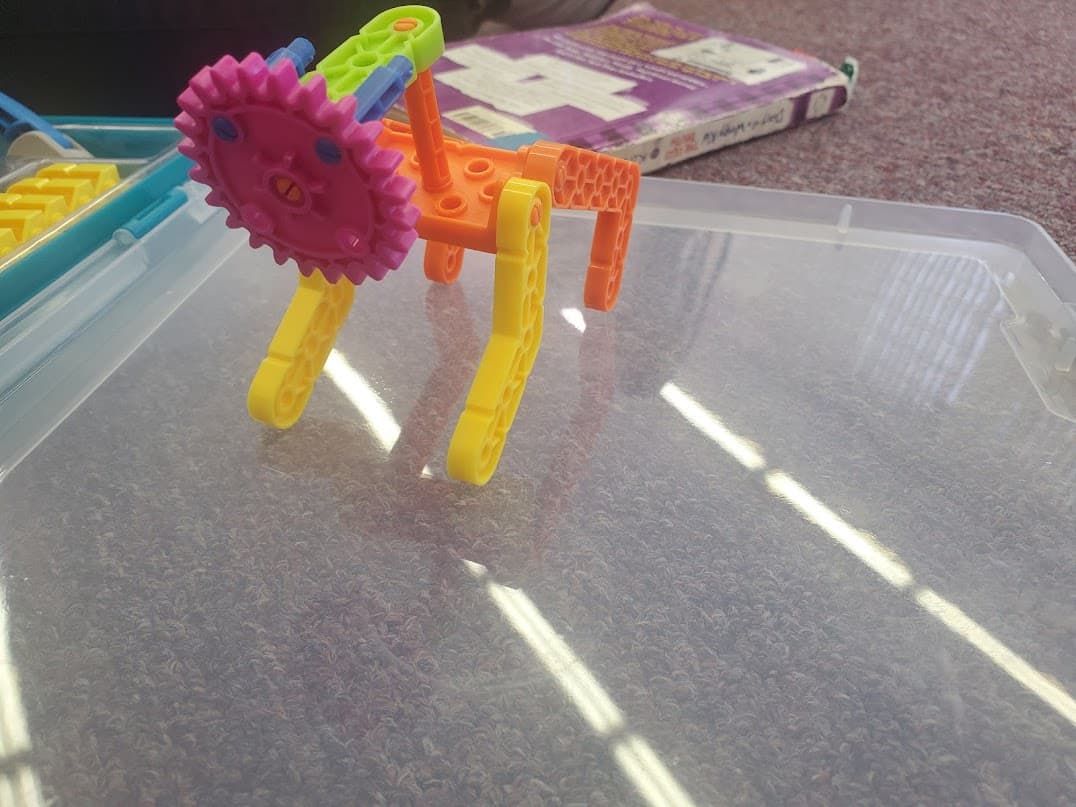I am loving using VexGO in the classroom, and we just did the Creature Creation activity. My younger grades (3-5) loved it, but my older grades (6-8) had ‘deer in headlights’ look when I gave them such an open-ended option of create anything you want.
Being in education for over a decade, I find the regular classroom is often very much direct instruction with little room for creative, open-ended thought. I have found robotics is a great way to break my students out of their rut, and Creature Creation was definitely a great way to provide an opportunity for students to build confidence in expressing their own creativity.
What other ways have people found to build confidence? What other open-ended activities have been successful? Other lessons/stem activities that have had great creative results?
@Jessica_Drayer Great topic! I think middle schoolers in general are reluctant to put themselves out there, so it definitely is more challenging for them to feel confident when faced with an open-ended activity! It might help to start them off with activities that give several creative constraints that they must work within but that still offer choices, so they aren’t overwhelmed with the possibilities. You can gradually pull back on those constraints, working up to more and more fully open-ended activities. You can also spend time brainstorming ideas for any challenge as a group, and recording them for students to use when making decisions.
With the VEX GO Creature Creation Activity, for example, it might be helpful to spend time brainstorming with the students what the various VEX GO pieces could be used for before they ever start trying to “match” them with parts of their drawings. Doing several examples ahead of time might also make them feel more secure.
Having a discussion with the students afterwards about what worked well for them as well as what was more difficult during the activity can help too, as well as doing everything you can to make sure they feel safe putting their ideas out into the world. Over time, they’ll gain confidence and slowly become more comfortable with their own creativity, which is an excellent thing!
Great topic. VEX GO invites students to tinker, play, and explore due to the ease of finding pieces, putting them together, and also taking things apart. So I think a big part of encouraging students to be creative, to think divergently, is to make sure they have the tools to support those goals.
Second, I think assessment plays a large role. When the goal is an output (grade) instead of an outcome (collaboration, communication, iteration), students become focused on the output.
When I taught, my students would often ask, “Is this going to be graded?” I would always become very frustrated at these statements. However, upon further reflection, I know realize that those students were just logically responding to the incentives I established in my classroom. Make assessment something that is done with the student and not to the student goes a long way towards building confidence in open-ended activity.
What a great conversation! Something else that you might want to try, is to stretch the activity into two parts/lessons - one that focuses on creative construction, and then let that lead into creative design.
Begin with a sketch or an idea that you’ve made (or that you draw and create together as a class). Make it big enough so everyone can see it. Then have all of the students use their Kit pieces to try to recreate that sketch/drawing. Chances are, they will interpret the sketch in slightly different ways. There is a clear ‘goal’ for their work, and their creativity can be channeled accordingly. Come back together as a class, and look at all of the different creations - talk about how are they similar/different? Why did students choose the pieces they did? What might they do differently next time?
You could do a fun thing where students swap pieces of their construction with another student’s, to create a new 'creature, as an intermediate step if needed, to scaffold the ‘open ended building’. Or just go back and add one or two things to their creature to make it unique.
In the next phase, have them use what they experienced and build on it by drawing their own sketch to build from. Remind them of ideas they had for constructing from the previous class, and give limited time to draw so they have to make decisions quickly. Again, as Aimee said, constraints can be really helpful here. Then have students build from their sketch.
The idea of slowing down is to scaffold the expression of creativity, so that it is fun and engaging and not overwhelming. Hope that helps!
Love all the thoughts and discussion! I did take two weeks for the build giving students more time to rethink and design their creature creation. I had already thought of the exchanging plans, and loved the confirmation. I did that for all grades 3-8. It was interesting to see that the middle school students were so incredibly motivated for the exchange, and it gave them that peer accountability to invest so much thought and effort into their Creature Creation. I found for grades 3-5, the exchanging of their blueprints for the Creature Creation was more of a confusion for them trying to read the diagrams and blueprints of their classmates.
Either way… I LOVE this activity!!! I love the openness, the creativity, the depth of extending to blueprints, teamwork required, and real-world applications!!

